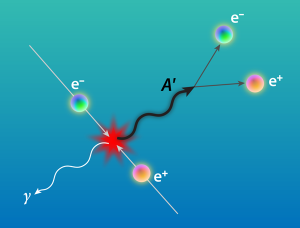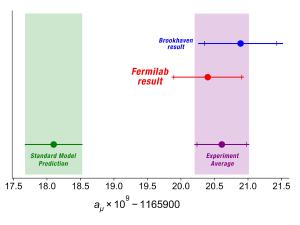Blog
In the Darkness Bind Them
21 September 2023
 Gerd Altmann, via Pixabay
Gerd Altmann, via PixabayIf dark matter exists, then where are the particles?
This single question threatens to topple the standard cosmological model, known as the ΛCDM model. The CDM stands for cold dark matter, and according to the model makes up nearly 85% of matter in the universe. It should be everywhere, and all around us, and yet every single search for dark matter particles has come up empty. If dark matter particles are real, we know what they are not. We don’t know what they are.
There are lots of ideas, from WIMPs to axions to sterile neutrinos, and none of them have shown up in our detectors. But one of the problems could be that while dark matter particles are everywhere, their particle mass is much higher than we can detect in our particle accelerators and neutrino observatories. If that’s the case, we may never observe them directly. But we might be able to detect the force that allows them to interact.
In particle physics, each fundamental force has one or more carrier bosons. Electromagnetism has the photon, the strong force has the gluons, the weak force has W & Z bosons, the gravitational force the graviton. Dark matter interacts gravitationally, but it also may interact via a dark force, which should have a carrier boson known as the dark photon.
 APS/Alan Stonebraker
APS/Alan StonebrakerDark photons turn up in a generalization of the standard model of particle physics. According to theory, they would interact with dark matter similar to the way photons interact with charged particles. But just as the weak force and electromagnetism are connected as the electroweak force, this dark force and electromagnetism would be connected as a kind of electrodark force. What this means is that regular photons and dark photons could mix slightly, allowing dark matter to interact with regular matter very slightly. Although photons have no mass, dark photons would have mass. This means they would only interact over very short distances, and could quickly decay into other particles. Like the gluons of the strong force, we can’t observe them directly, but we can observe how they cause particles to interact. This is where a new study on dark photons comes in.1
The authors analyze the dark photon model in two ways. The first is to use experimental data to constrain the physical parameters of dark photons, such as their mass and how strongly they mix with regular photons. The second is to compare a particle physics model with and without dark photons to key experimental results. In general, the study finds that the dark photon model is a better fit than the standard model, but it’s a particularly good fit for an experiment known as the anomalous magnetic moment of the gluon, or g - 2.
 Ryan Postel, Fermilab/Muon g-2 collaboration
Ryan Postel, Fermilab/Muon g-2 collaborationThe muon is a heavier sibling of the electron, and like the electron, it has an electric charge and a magnetic moment, or g-factor. The value of the muon g-factor is almost, but not exactly, equal to 2. The “not exactly” part, g - 2, is one of the most precisely measured values in particle physics. It is also one of the most precisely calculated values in particle theory. And they don’t agree.
Experimentally, g - 2 = 0.00233184121. Theoretical calculations put g - 2 = 0.00233183620. This is known as the g - 2 anomaly and is beyond irksome. If you include dark photon interactions, the theoretical result becomes g - 2 = 0.00233183939, which is significantly better. Overall, the dark photon model is preferred over the standard model at 6.5σ, which is a very strong result.
All of this is very interesting, but we should add a few caveats. The first is that while this work shows dark photons are a good fit for experimental data, the same could be said for other generalizations of the standard model. The second is that this doesn’t prove that dark photons are real, only that they aren’t excluded as a possibility. That said, dark photons are definitely an idea to explore further.
Hunt-Smith, N. T., et al. “Global QCD analysis and dark photons.” Journal of High Energy Physics 96 (2023) ↩︎